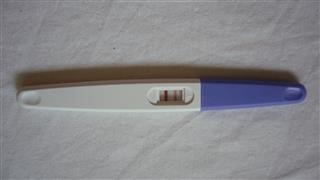The Infertility Website
Infertility Survival Day
We are the complete source for complete info and resources for Infertility Survival Day online.
The Disappearing Y Chromosome – “I Told You So!” (PDF, 266 KB) Human Reproduction, 1997. The gonadotropins in these formulations are FSH, and in some cases, a combination of FSH and LH (luteinizing hormone). Sperm are then collected, washed, and added to the eggs in the dish. When Predictions Don’t Predict. (PDF, 549 KB) The Australian and New Zealand Journal of Obstetrics and Gynaecology, 1991. Previously, metformin was recommended as treatment for anovulation in polycystic ovary syndrome, but in the largest trial to date, comparing clomiphene with metformin, clomiphene was more effective than metformin alone.[21] Following this study, the ESHRE/ASRM-sponsored Consensus workshop do not recommend metformin for ovulation stimulation.[22] Subsequent randomized studies have confirmed the lack of evidence for adding metformin to clomiphene.
In such circumstances, it is recommended not to prescribe any medication until all basic investigations are done and its results received. Exposure to some chemicals: Some pesticides, herbicides, metals, such as lead, and solvents have been linked to fertility problems in both men and women. Large submucosal uterine fibroids may make the uterus' cavity bigger, increasing the distance the sperm has to travel. In fact, female age-related infertility is the most common cause of infertility today. After stimulation, the physician surgically extracts one or more eggs from the ovary, and unites them with sperm in a laboratory setting, with the intent of producing one or more embryos.
A lot more Resources For Infertility Clinic in Hamad Hospital

Even more Info Around Infertility Clinic in Hamad Hospital
Intracytoplasmic sperm injection is a process by which semen is washed and prepared for direct injection of one sperm into each egg collected during the IVF process. Women receiving fertility treatment have a slightly higher risk of an ectopic pregnancy.
Right here are Some More Resources on Infertility Clinic in Hamad Hospital
In-vitro fertilization (IVF): Sperm are placed with unfertilized eggs in a petri dish, where fertilization can take place. The Disappearing Male. (PDF, 1 MB) From Towards Reproductive Certainty, 1999. Ovarian Transplantation between Monozygotic Twins Discordant for Premature Ovarian Failure. (PDF, 315 KB) The New England Journal of Medicine, 2005. In men who have the necessary reproductive organs to procreate, infertility can be caused by low sperm count due to endocrine problems, drugs, radiation, or infection.
Much more Resources For Usage for Infertility
Apparently there are only 0,014% of them (this could be an explanation of why they were not discovered until now). Vasectomy and Vasectomy Reversal. (PDF, 7 MB) Fertility and Sterility, 1978. The epididymis is a coil-like structure in the testicles which helps store and transport sperm. 50% are female causes with 25% being due to anovulation and 25% tubal problems/other.[74] In Sweden, approximately 10% of couples wanting children are infertile.[75] In approximately one third of these cases the man is the factor, in one third the woman is the factor, and in the remaining third the infertility is a product of factors on both parts. A small incision is made in the abdomen, and a thin, flexible microscope with a light at the end, called a laparoscope, is inserted through it. Each country has its own body or bodies responsible for the inspection and licensing of fertility treatment under the EU Tissues and Cells directive [78] Regulatory bodies are also found in Canada [79] and in the state of Victoria in Australia [80] See also[edit] [edit] Inhorn MC (2003). "Global infertility and the globalization of new reproductive technologies: illustrations from Egypt". The doctor may ask about the couple's sexual habits and make recommendations regarding these. Demographic definitions of infertility An inability of those of reproductive age (15-49 years) to become or remain pregnant within five years of exposure to pregnancy. (DHS2) An inability to become pregnant with a live birth, within five years of exposure based upon a consistent union status, lack of contraceptive use, non-lactating and maintaining a desire for a child. (Trends in prevalence4). Having sex near the time of ovulation is the best way to increase the chance of becoming pregnant. This can be done by a urine test, basal body temperature chart, progesterone test and/or endometrial biopsy. The fluid comes from the prostate gland, the seminal vesicle, and other sex glands. Fertilization takes place outside the body, and the fertilized egg is reinserted into the woman's reproductive tract, in a procedure called embryo transfer. However, future pregnancy is possible with the other ovary and tube.
Previous Next
See also
Causes of Infertility Percentage
Infertility With Regular Periods
Unexplained Infertility Immunotherapy